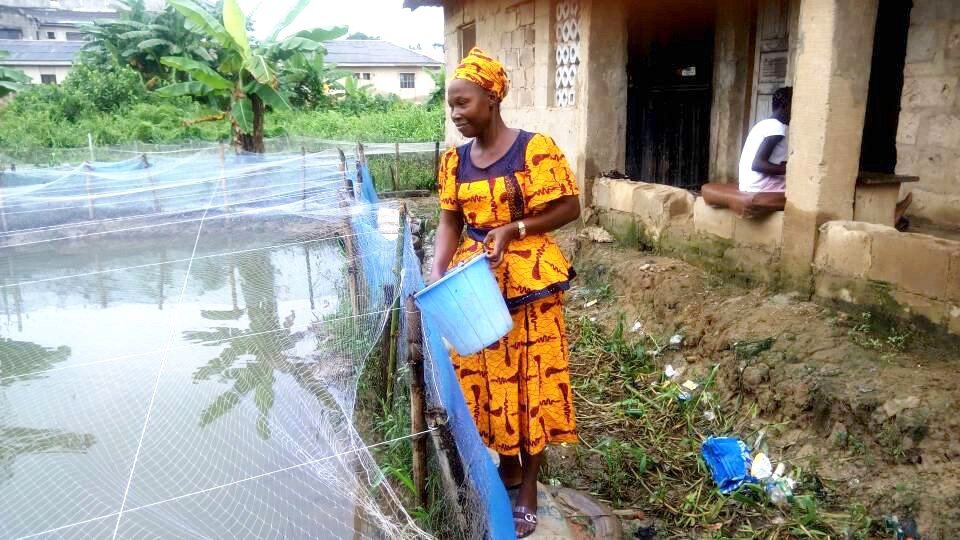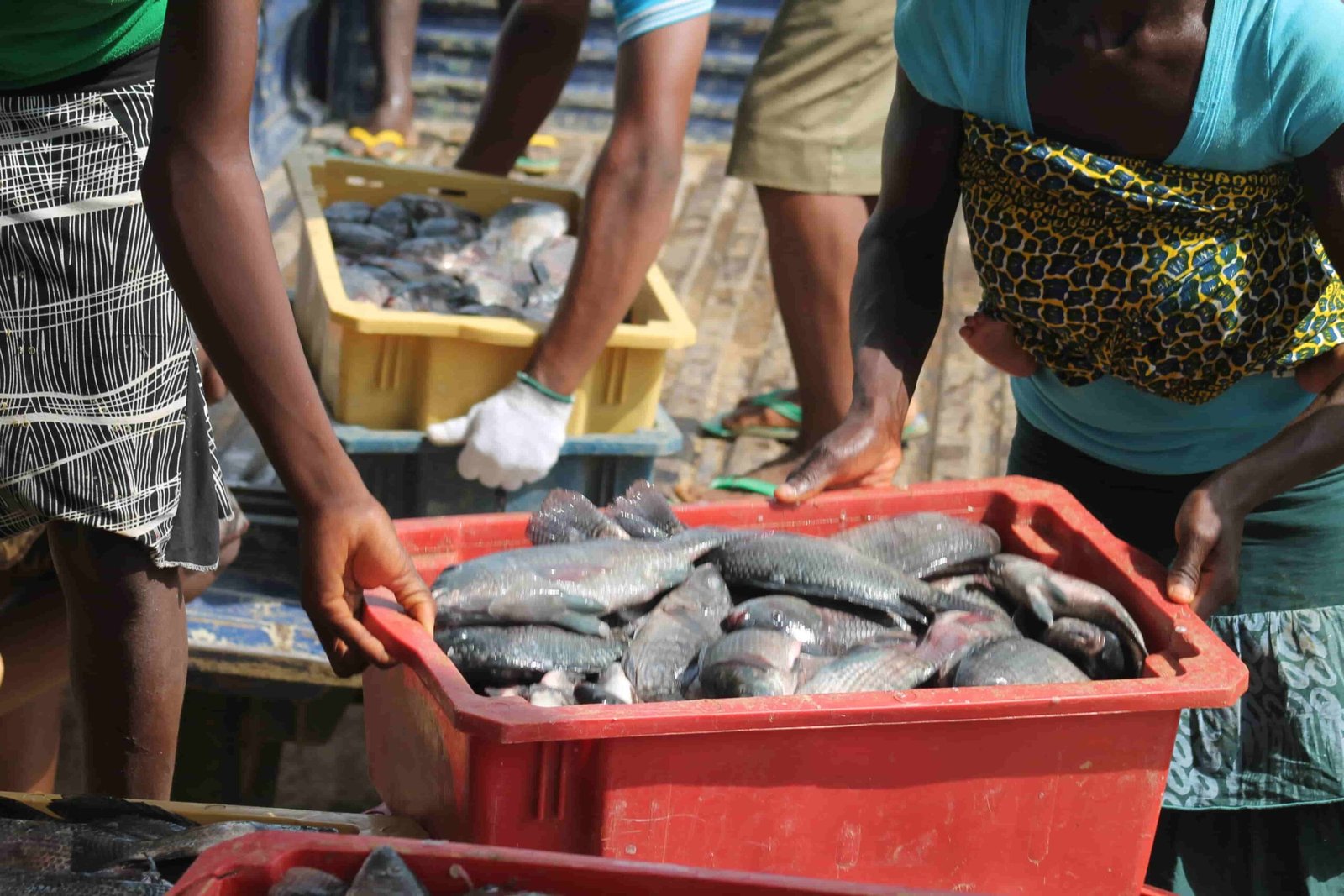Sorting And Grading Of Catfish

What is the sorting and grading of catfish? How do you sort and grade fish? When should I sort my catfish? Why are fish generally graded? Which comes first sorting or grading? What is the difference between sorting and grading? What do you know about sorting? What are the basic criteria for sorting and grading? What is fish grading? What do you mean by grading? Why is sorting and grading important? What are the advantages of sorting? What is sorting and its types? What is grading and sorting in agriculture? What are the different methods of sorting?
Importance Of Fish Sorting And Grading
Two weeks after stocking, sort your fish and remove the shooters from your pond in order to reduce cannibalism.
To do this (in all forms of concrete pond), drain the pond water completely, using the water discharge pipe by adjusting it downward, or use a petrol-powered water pump to pump out the water from the pond, if it’s stagnant pond.
Once the water has been completely drained out, select and remove the shooters.
Thereafter, fill the pond with water again, after adjusting the discharge pipe upwards, place the sorted shooters into another pond with water.
This process has to be repeated after another 2 weeks or better still, once every month for the next two months after the initial sorting of the pond.
At each time of sorting, grade the fish according to their sizes – bigger ones together and smaller ones together – into different ponds.
In the case of earthen ponds, you have to use a petrol-powered water pump to drain your pond water after the first 8 weeks of stocking.
After draining the water, sort out the shooters and place them in another pond. Thereafter, refill your pond with water from another pond.
This process has to be repeated again after another two months. Grading is not necessary for the earthen pond system because it is a very cumbersome process and besides, the fish can manage better after sorting them twice.
Management Of Water Re-Circulatory Concrete Pond System
Cleaning The Pond
In this case, make sure that your water is in good condition always, not polluted and not smelly.
Also make sure that the pond water is circulated frequently, if possible constantly.
Examine the filtration chambers and filters as well as the bio-filter always.
As soon as you notice that it has accumulated much waste, remove the filters, wash them and the tank properly before re-installing them.
Once in a while, discharge the entire water in your fish pond into other ponds, wash your pond and re-fill your pond with fresh water and fertilise it with water from a sedimentation chamber or other ponds.
Aerating Your Pond
Install an aerator – air compressor or pump, industrial or vulcanised type – in your pond so as to introduce oxygen into your pond and also to remove the smell from your pond.
In installing it you have to pass the hose or pipe into your pond.
While pumping, apart from introducing oxygen into your pond and removing smells from your pond, it also creates bubbles or waves akin to the condition of a natural environment.
This helps the fish to grow well and become active.
Cleaning Of Water Filters
Permanent wastewater filters of 8mm diameter should be installed.
The water filter that is being referred to here should be made with a perforated plastic pipe (PVC) of between 3 to 6 inches, depending on the size of your pond.
You can use a soldering iron connected to electricity to perforate the holes.
Using Bio-Filters For Pond Water Treatment
Having discussed all concrete grow-out pond systems, it is obvious that the water purification and re-circulation are the best so it is the most advanced method of pond water treatment, using the bio-filter.
Before now, the conventional method of circulation involves the use of a particulate filter (gravel, sand, carbon) or net filters, which are highly limited in their ability to remove all waters found in pond water and also improve the quality of the needed water.
This is because a lot of shortcomings are inherent in the system, hence the need for a bio-filter.
Fish farming is purely aquaculture. It is heavily dependent on water.
Therefore the management, quality and availability of water have to be given a high premium.
The bio-filter helps you to realise the twin objectives of efficient pond water utilisation and improved pond water quality.
For hatchery operations, the tree flow water system is employed especially in the initial 10 days.
This leads to very high water turnover since all the used water from the pond is not re-circled.
Furthermore, during the dry season and in areas where good water is not readily available or its availability cannot be guaranteed, there is a need for the wastewater from the pond to be re-circled so as to conserve the available water also maintaining its quality.
The conventional method of circulation is only capable of removing most of the solid and suspended wastes in the water thereby compromising the pond water quality and, thus, creating a potentially dangerous situation for the fish, particularly if your catfish stocking rate is high.
With the bio-filter however, at least 97% of about 20 types of identified wasted and disease-causing agents found in fish pond water are removed.
Bio-filter is a very efficient water purification and re-circulation equipment.
Apart from the fact that it helps to remove both biological and mechanical (solid, suspended and dissolved microscopic) wastes from recycled water it also helps to conserve water as well as enhance good and increased water quality, water conditions, fish performance, growth, stocking capacity, activity, etc.
Classification Of Wastes Found In Pond Water
They are classified into three major categories:
SOLID WASTE: Such as leaves, sand, grains, shells, grain particles, bone particles, fibre and other food particles. These solid wastes easily precipitate and settle at the base of the pond where they gradually decompose and pose danger to fish
SUSPENDED WASTE: Such as leaves, green algae, nematodes, etc.
DISSOLVED WASTE: Such as urea, ammonia, nitrates, carbon dioxide and drugs
Component Section Of The Bio-Filter: How They Function
The bio-filter is three in one component sections.
They are ultraviolet light sterilisation compartment, which destroys all soluble/microscopic disease-causing agents such as nematodes, pathogens and microbes.
The de-nitrification and de-carbonation compartment use the activities of bacteria to convert harmful nitrites to nitrate and also remove carbon dioxide from the water.
Furthermore, it also converts ammonia, urea, copper, etc. into harmless materials.
The particular waste removal compartment, removes both solid and suspended waste from the water, using specially designed foams or brushes with specially designed bristles to trap waste and separate them from the water before taking the water directly back into the pond or to an overhead water reservoir from where the water flows into the pond.
How The Bio-Filter Works
The primary function of the bio-filter is to remove all microscopic, dissolved suspended and solid wastes from the pond water.
It also helps to remove toxic wastes and convert carbon dioxide. The bio-filter works effectively with the aid of a water pump.
Wastewater leaving the pond goes through the wastewater discharge pipe into the water pump gutter from where it is channelled to two or three chamber filtration/sedimentation chambers.
The first chamber is the primary filtration chamber. It is filed with the mosquito net as a filter.
Most of the solid wastes are trapped in this chamber by the mosquito net which acts as a filter, partial sedimentation also takes place here.
From here the partially filtered water flows on its own to the second chamber, where most of the sedimentation through precipitation takes place.
Finally, it flows further into the third chamber, which serves as an underground water reservoir and at the same time where final sedimentation takes place.
With the aid of a water pump, water from the third chamber is picked up and passed through the bio-filter.
The water on getting to the bio-filter first passes through the ultraviolet light sterilisation compartment, where all soluble/microscopic disease-causing agents such as nematodes, pathogens and microbes are destroyed.
From here the water proceeds to the particulate waste removal compartment, where all solid and suspended wastes are removed from the water.
Finally, the water is passed to the de-nitrification de-carbonisation compartment where the bio-filter uses the activities of bacteria to convert harmful nitrites and also remove carbon dioxide, ammonia, urea, copper, etc. from the water before the refined and purified water directly back to the pond or to an overhead water reservoir from where the water flows to the pond.
The bio-filter can be used either independently or together with conventional water filters irrespective of whether they are already in place or not as could be seen from the one already explained above.
It will help to enhance the filtration and recirculation process.
The running of the bio-filtration is heavily dependent on electricity and as such an alternate source of power should be put in place.
But reduce power consumption on a 24-hour basis daily.
You could first pump the water through the bio-filter to an elevated water reservoir from where it will flow to the ponds as soon as you notice that the elevated water reservoir is almost empty, you can then switch on the water pump to resume pumping the water until the tank is filled, after which you have to switch it off and resume later when the tank is almost empty.
As an alternative to this, you could run and stop the system every 3 or 6 hours.
To do this, you may not need the elevated water reservoir.
What happens is that by switching on the water pump, the water passes through the bio-filter where it is refined.
Water is passed directly back to the pond on a continuous basis for either 3 to 6 hours intermittently or for 24 hours continuously.
Effects Of Bio-Filteration
- High water quality and efficiency
- Quicker growth rate of fish
- High stocking capacity of between 100 and 200 per square metre
- Higher percentage of dissolved oxygen up to 60% higher than other pond systems due to constant water movement and activities of bacteria in the bio-filter
- Lesser space requirement for a large number of fish
- It is very light and portable and hence can be transported in the booth of any car to any destination
- Has a lifespan of up to 5 years
Management Of Free Flow Concrete Pond System
The management procedure is the same as that of the re-circulatory pond system, except that the filtration tank, filters and sedimentation chambers are not part of the free flow concrete pond system.
But to ensure good pond water condition, you must run the pond water for at least 6 hours every two days, otherwise, you should run it every day if you have enough water.
Management Of The Stagnant Concrete Pond System
Change the pond water at regular intervals, at least twice a month or as the pond situation demands.
Aerate the pond regularly using air pumps or by pumping water into it while allowing the wastewater to overflow through the water overflow pipe especially a week after changing the pond water.
Management Of The Earthen Pond System
You do not need to change the water except when there is water pollution from within or outside the pond.
In this case, you have to remove polluted water and refill the pond with good water from another pond so as to supplement the one flowing from underground.
You can also fill the pond to the regular water level during the dry season as soon as you notice a fall in the pond water level.
Introduce water hyacinth or water lettuce to help filter the pond water, making it clean after two months of stocking.
The water hyacinth serves as feed for the fish while also helping to introduce oxygen to the water.
If the spread of the feed is too much remove some as to create space for you to feed the fish and for the fish to have access to the feed and feed effectively.
Trouble Shooting Earthen And Concrete Pond System
If your fish is not growing well (not active or dying), then watch out for the following:
- There may be low water oxygen so change the pond water and/or aerate it
- There may be overstocking so reduce the stocked quantity to recommended stock rate for each pond type
- The feed and feeding may be poor and inadequate so change the feed or improve the feeding quality, strategy and time
- Seek to know the source of the stocked fish including the species and the age with a view of changing it when next you are stocking
If the fish are always staying at the top of the pond, near the water surface, then watch out for the following:
- The base of the pond may have accumulated a lot of dirt and dregs in form of fish food, wastes excreta, etc. Either you siphon the pond using the one-inch water hose or better still, evacuate the pond water by about 80% of its volume, scoop the settled wastes with plastic or other useful material and refill the pond water with fresh water mixed with fertilised water from other ponds, wash the ponds and refill the pond with fresh water mixed with filtered water from other ponds
- There may be low water oxygen, so you need to aerate the pond water using an air compressor or air machine and/or change the pond water by evacuating the pond water by about 80% of its volume and refilling it with fresh water or better still running the water by pumping fresh water into the pond while discharging wastewater from the pond through the wastewater outlet simultaneously for between 3 and 6 hours
Please note that these conditions are most common with concrete ponds, especially stagnant ponds.
Wrap Up
That’s all on sorting and grading of catfish here in Naija. You can see my last series here where I talked about Catfish Farming Feeding Methods In Nigeria. Watch out for more insights on the HARVESTING AND MARKETING OF CATFISH in series 9.
Article updated 1 month ago ago. Content is written and modified by multiple authors.









